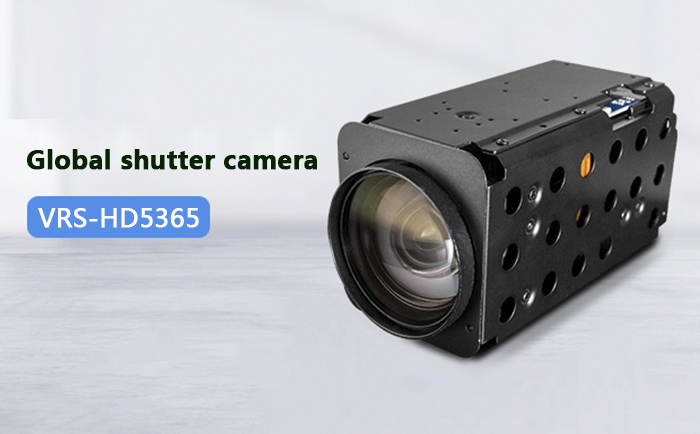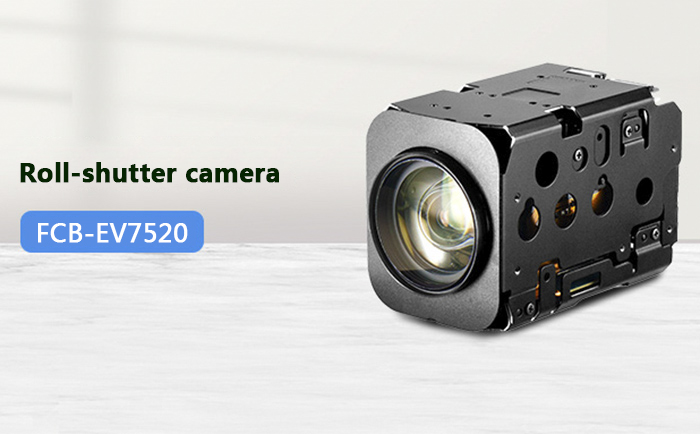In the conventional cognition, many users believe that when shooting moving objects, the first thing they think of is the global shutter camera, which does not produce a tailing phenomenon, and must be better than the rolling shutter camera. But is that the case?
First of all, let’s popularize the definition, working principle and advantages of global shutter camera and roll-shutter camera.
Global shutter camera

Definition:
A Global Shutter Camera is a camera that uses global shutter exposure technology.
How it works:
It works by exposing all pixels of the entire image sensor at the same point in time, and then reading the signal of all pixels at the same time, thus capturing the entire image.
Advantages:
Avoid image distortion or the “rolling shutter” effect when photographing moving objects because the global shutter exposes the entire image sensor at the same time.
Suitable for capturing fast moving objects or high-speed motion scenes, the image is clearer and more accurate.
Suitable for measuring the speed and position of moving objects, such as machine vision, motion analysis and other applications.
Cons:
The cost is higher, usually more expensive than roll-shutter cameras.
In low light conditions may be affected by noise, performance is not as good as rolling shutter cameras.
For shooting static or low-speed objects, there may be no obvious advantage.
Application scenario:
Global shutter cameras are often used in applications that require high-speed shooting or accurate measurement of objects, such as machine vision, motion analysis, and medical imaging.
Roll-shutter camera

Definition:
A Rolling Shutter Camera is a camera that uses a rolling shutter exposure technique.
How it works:
It works by exposing and reading the image line by line, similar to exposing it from top to bottom or left to right like a curtain. When shooting, the pixels in each row or column are exposed and read in sequence, so the image may be distorted or trailed when shooting moving objects.
Advantages:
With a smaller exposure time, the cost is relatively low and it is more popular.
Performs well in the shooting of static or low speed objects.
It usually performs better in low light conditions with less noise.
Cons:
When shooting high-speed moving objects, the image may be distorted or trailed, which affects the image quality.
Not suitable for measuring the speed and position of moving objects, errors may occur.
For some specialized applications, such as machine vision, motion analysis, etc., may not perform as well as global shutter cameras.
Application scenario
Roll-shutter cameras are suitable for most scenarios, such as security monitoring, drones, medical, video conferencing and so on. They are generally more affordable and have stable and reliable performance. However, in professional applications where high-speed motion needs to be captured or precise measurements of objects are required, often, roll-shutter cameras may not meet the needs.
Comparison of measured results
In view of taking moving objects, whether the global shutter camera will not necessarily have the phenomenon of tailing, whether it is better than the rolling shutter camera, Wang Gong has made a special comparison of the measured effect.
Test content:
Test object: low speed and high speed fan
Test conditions: The image format is the same, 1080P60
The measured results:
In the state of automatic exposure, when shooting the fan rotating at a low speed, the global shutter camera and the roll-shutter camera will produce a serious tailing phenomenon, and the edge of the fan blade is not clear;
When the exposure time is gradually reduced,
(1) At 1/100 second, the image tailing captured by the global shutter camera is significantly smaller, while that of the roll-shutter camera does not change much;
(2) At 1/250 second, the image tailing captured by the global shutter camera is basically gone, the fan blade edge is very clear, and the shutter camera is still not very clear;
(3) When 1/500 seconds, the image trailage captured by the shutter camera is improved a lot, the fan blade edge is also some clear, the global shutter camera goes without saying, even if the speed of the fan jumps to the fastest gear, the captured fan blade edge is also very clear, but at this time the noise on the screen will be more, and it is dark;
(4) When 1/1000 seconds, the image trawling phenomenon captured by the rolling shutter camera completely disappeared, and the edge of the fan blade became very clear, and at this time, the noise and brightness of the picture did not change much, and would not affect the normal output of the image, while the global shutter camera could not do it.
Conclusion:
When shooting moving objects, the global shutter camera can output clear images, and the rolling shutter can do the same, but it needs to be achieved under a smaller exposure time, and there is less noise on the entire screen, which will not affect the clarity of the image.
There is a saying that is very good, “the paper comes from the end sense shallow”, through the measurement of Wang Gong, how should the global shutter camera and rolling shutter camera choose? I think you have the answer in mind.
 Sony FCB camera block
Sony FCB camera block